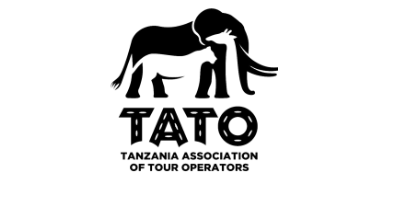The Great Serengeti Migration, often dubbed the “Greatest Show on Earth,” is a magnificent natural spectacle that unfolds across the vast plains of East Africa. In this 2000-word article, we will delve into the intricacies of this awe-inspiring event, exploring its underlying mechanisms, the roles of different species, and the human dimension.
Introduction to the Great Serengeti Migration
The Great Serengeti Migration is an annual event that sees millions of animals, primarily wildebeests and zebras, traversing the Serengeti ecosystem in Tanzania and the Maasai Mara in Kenya. This phenomenon has fascinated explorers, conservationists, and tourists for generations.
The Key Players: Wildebeests, Zebras, and Predators
Wildebeests and zebras are the stars of the show. They form the vanguard of the migration, making their way in search of fresh grazing lands. Predators like lions, leopards, and crocodiles eagerly await the migration, making it a remarkable spectacle of survival of the fittest.
The Seasonal Movement: Rainy and Dry Seasons
The Serengeti Migration is a perpetual cycle between the rainy and dry seasons. During the wet season, animals move north in search of lush grasses. In the dry season, they return south to avoid drought and find water.
The Role of Geography
The Serengeti’s diverse geography, which includes vast plains, woodlands, and rivers, plays a pivotal role in shaping the migration’s patterns. The Mara River, in particular, is infamous for its dramatic river crossings.
Migration Routes and Timing
The animals follow specific migration routes, driven by instinct and their need for sustenance. The timing of the migration varies, but it typically occurs from June to August.
How do Animals Navigate?
The question of how animals navigate across hundreds of miles without GPS or maps is fascinating. Scientists believe they use a combination of factors like the Earth’s magnetic field, the sun, and the stars.
The Thrilling River Crossings
Perhaps the most heart-pounding aspect of the migration is the river crossings. Animals brave crocodile-infested waters, and the spectacle often culminates in life-or-death situations.
The Circle of Life: Births and Deaths
The migration isn’t just about movement; it’s also a time for renewal. Calves are born during this period, but it’s also a time when predators feast, balancing life in the Serengeti.
Ecological Impact of the Migration
The migration has a profound ecological impact on the Serengeti ecosystem, helping maintain the grasslands, reducing overgrazing, and influencing plant distribution.
Human Encounters and Conservation
Tourists flock to the Serengeti to witness this extraordinary event. However, it’s crucial to maintain a delicate balance between tourism and conservation efforts.
Challenges Faced by the Migration
The Great Serengeti Migration faces various challenges, including habitat loss, human-wildlife conflicts, and climate change.
Unique Behaviors and Adaptations
Throughout the journey, animals display remarkable behaviors and adaptations, such as forming protective herds and enduring harsh conditions.
Tracking and Research Efforts
Scientists and conservationists employ advanced tracking and research methods to gain insights into the migration’s intricacies.
Future of the Great Serengeti Migration
As the world changes, the future of the Great Serengeti Migration is uncertain. Conservation efforts and responsible tourism are vital for its preservation.
Conclusion
The Great Serengeti Migration is a testament to the wonders of the natural world. Its survival is a reminder of the need for conservation and respect for the delicate balance of life in the wild.
Frequently Asked Questions
1. Is the Great Serengeti Migration a one-time event, or does it occur annually?
The Great Serengeti Migration is an annual event that occurs between the Serengeti ecosystem in Tanzania and the Maasai Mara in Kenya.
2. How do animals know when and where to migrate?
Animals rely on a combination of natural cues, including the Earth’s magnetic field, the sun, and the stars, to navigate during the migration.
3. Are there any conservation efforts in place to protect the Serengeti Migration?
Yes, there are various conservation initiatives in place to protect the Serengeti Migration, as it is a vital component of the ecosystem and a major tourist attraction.
4. What is the best time to witness the river crossings during the migration?
The best time to witness the thrilling river crossings is typically from June to August, but the exact timing can vary.
5. How can tourists contribute to the conservation of the Great Serengeti Migration?
Tourists can contribute by supporting responsible and eco-friendly tourism practices, respecting wildlife, and contributing to local conservation efforts.










9z6ub0
2f6jdd